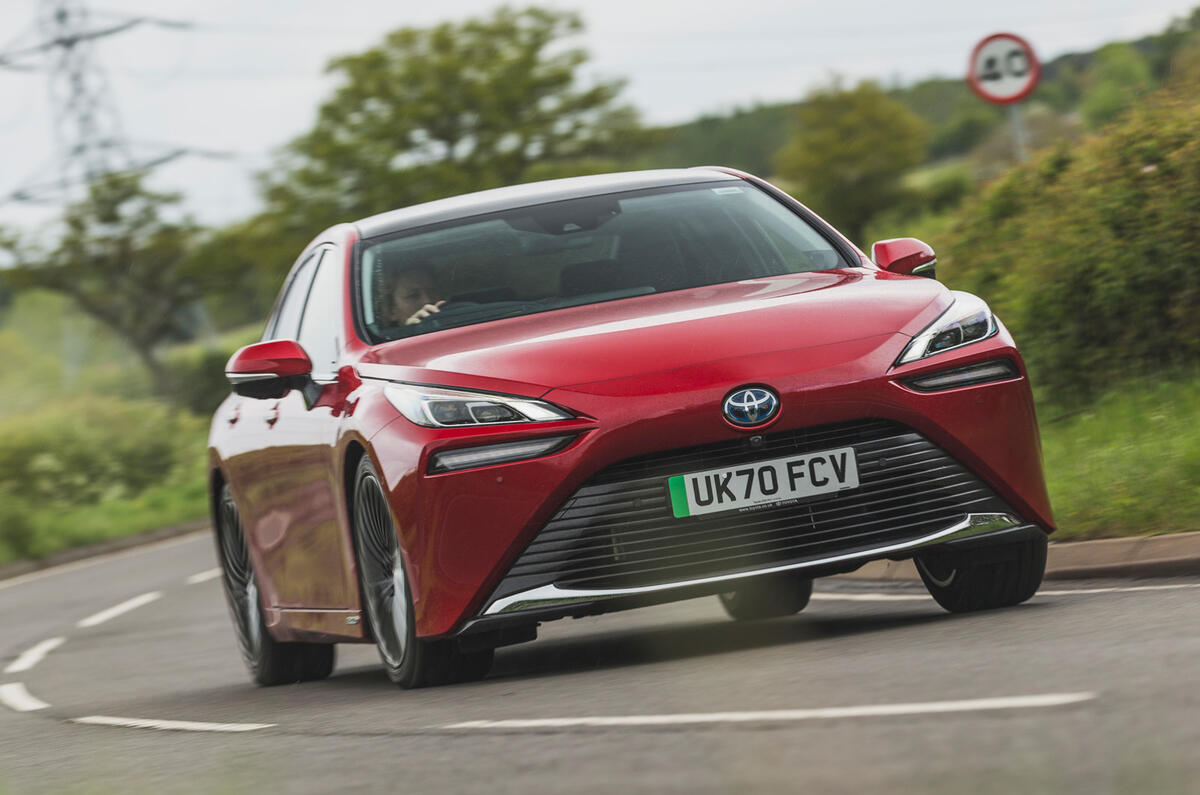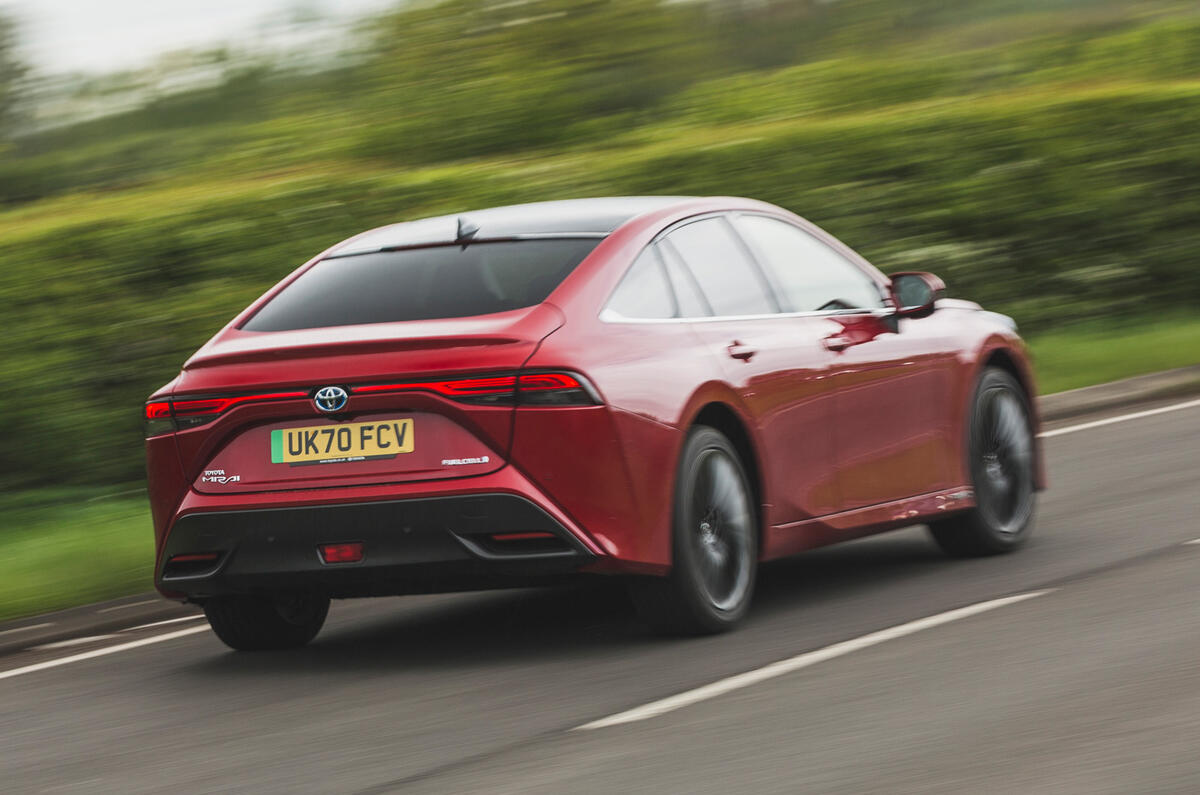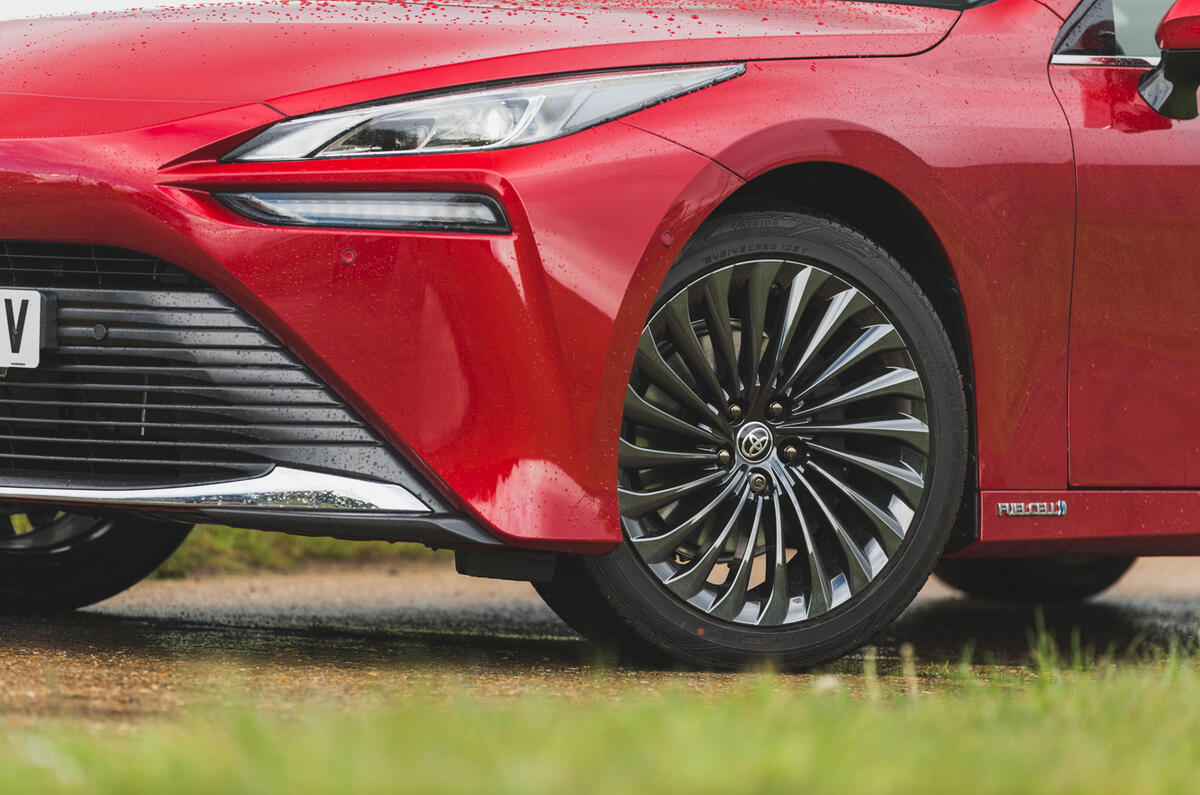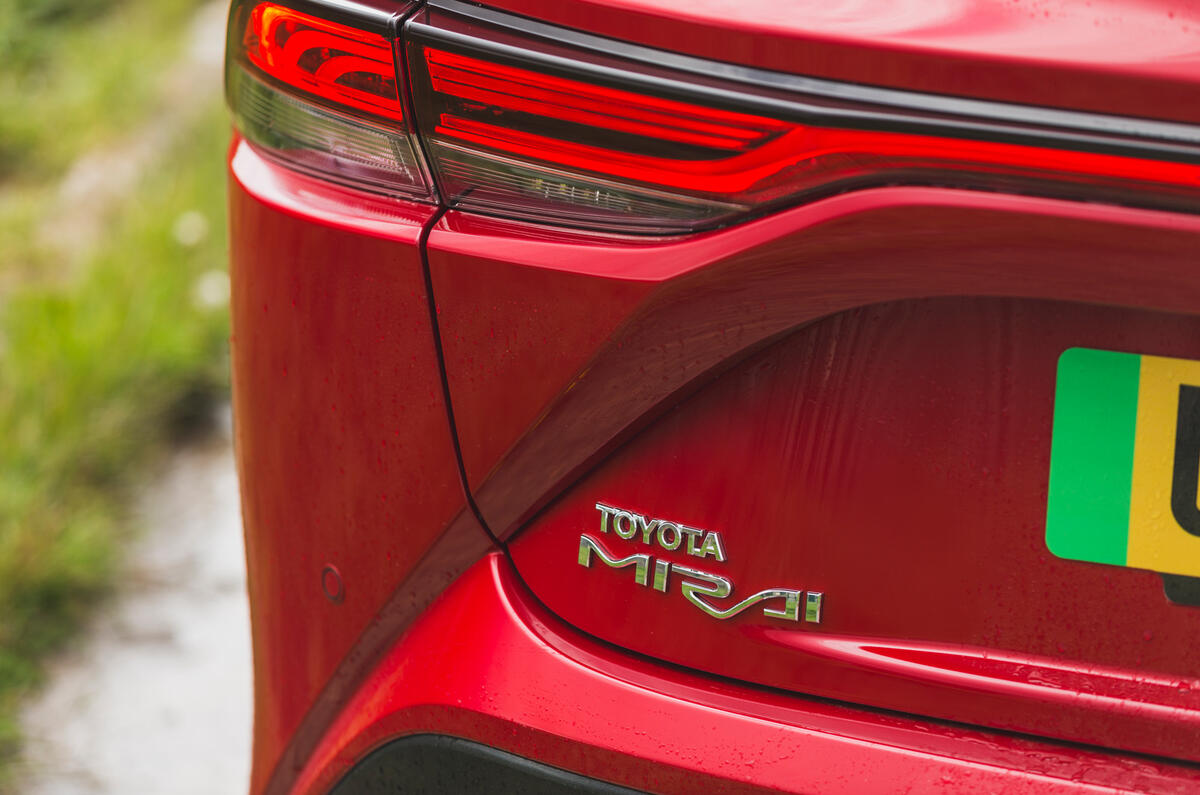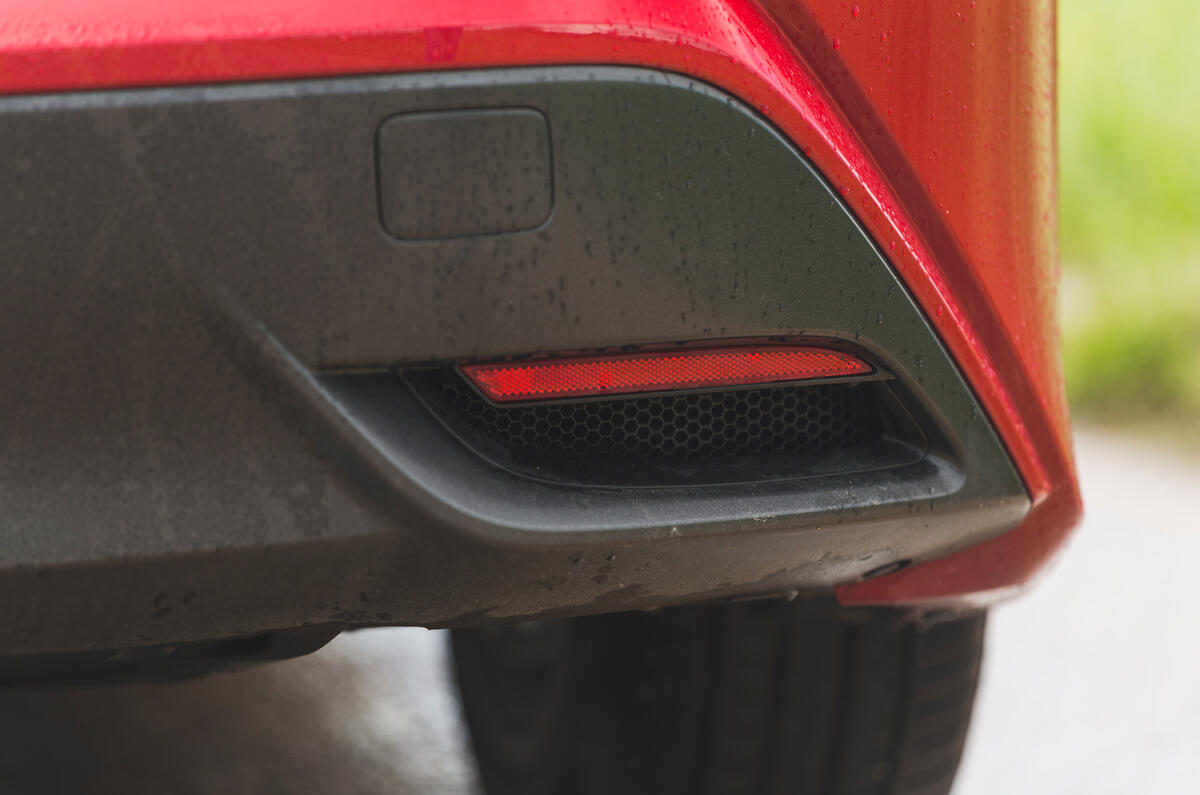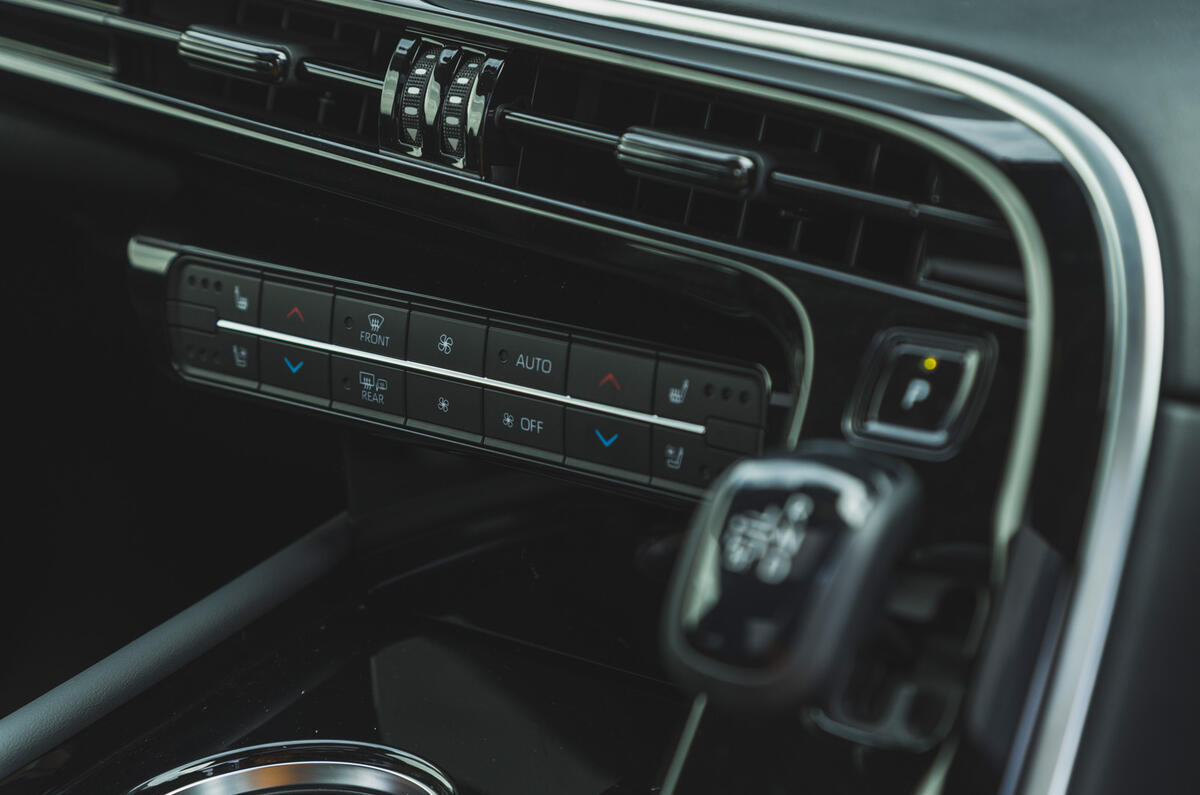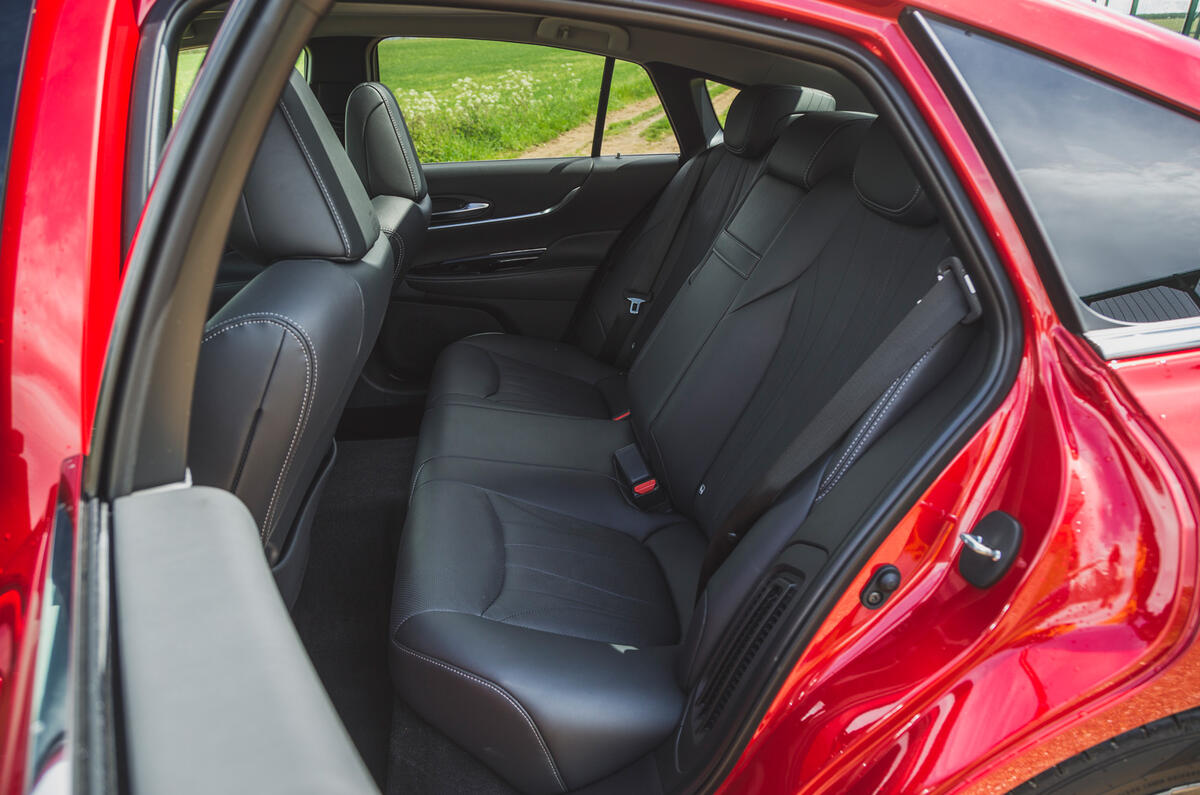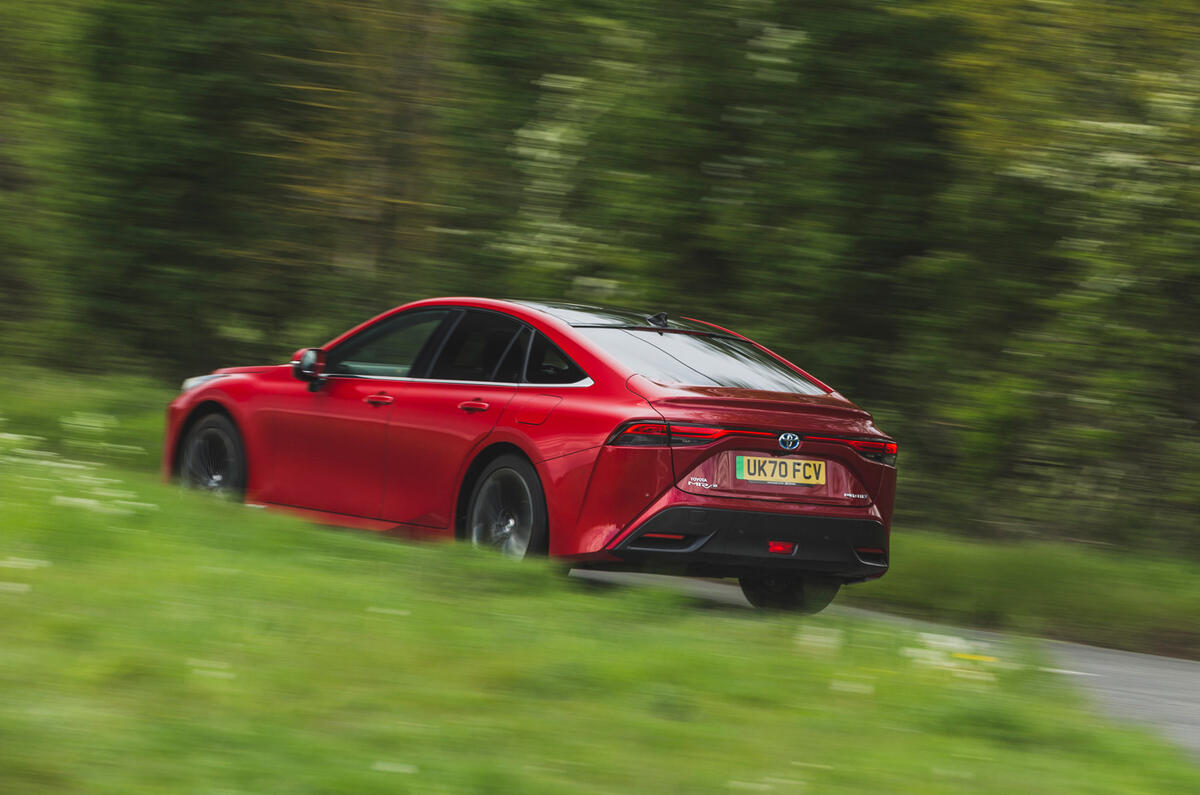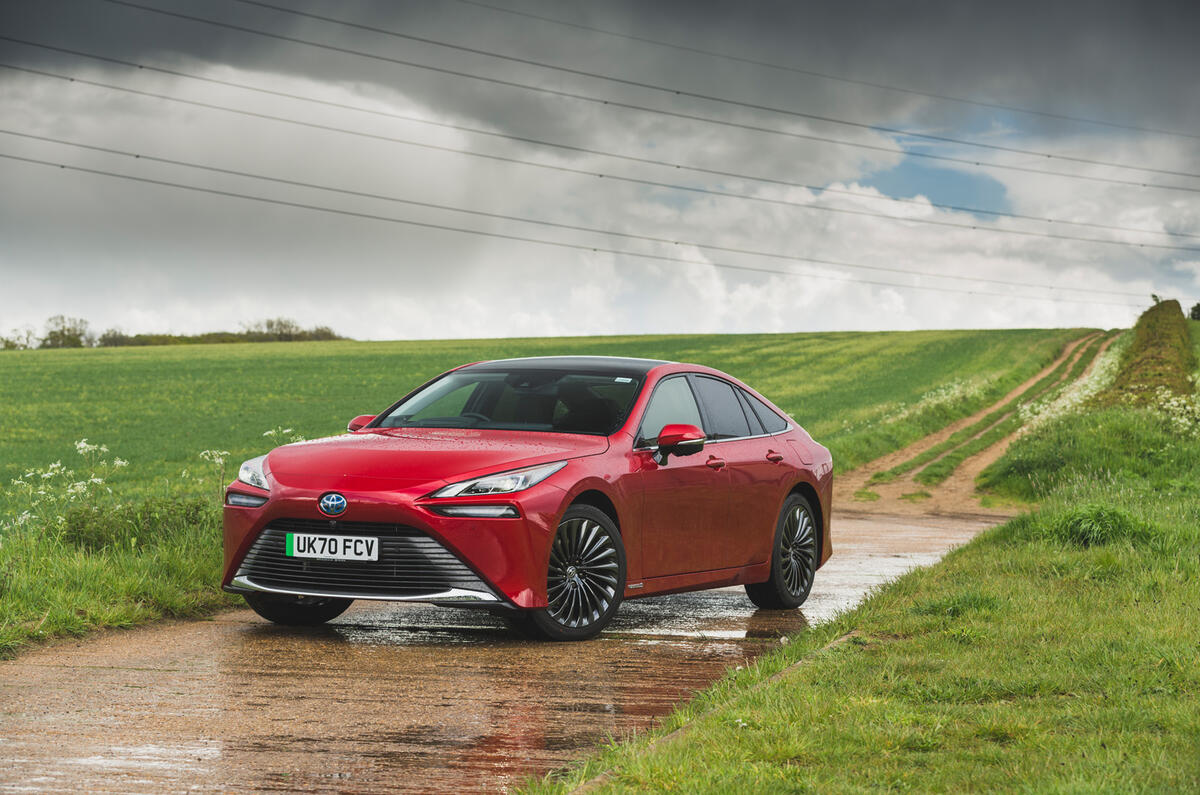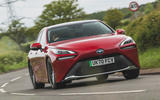To avoid outright disappointment with the Mirai’s performance potential, you need to cast aside the image of its surprisingly athletic cab-rearward silhouette the moment you slide aboard.
Twenty years ago, a car looking like this would have come equipped with a brawny V8, which would have been a fair match for the 1937kg as tested kerb weight. The Mirai’s rear-mounted electric motor is rather less impressive, and gives the car a power-to-weight ratio of just 94bhp per tonne, which today is about what you would expect from a mid-ranking hatchback.
Acceleration is therefore more stately than scintillating and, on the mile straight at Millbrook, the Mirai took 8.7sec to hit 60mph and 25.5sec to hit 100mph. For reference, the 180bhp Ford Focus ST-Line X we tested in 2019 took 8.9sec and 22.8sec respectively.
It’s a comparison that feels awkward for the £60,000 Mirai, which at least beat its only real rival, the more expensive Hyundai Nexo. That car took 9.6sec to 60mph and as long as 38.5sec to make triple figures. Stomach-dropping speed clearly doesn’t come as easily to fuel cell EVs as it does to battery-powered ones.
That said, there’s little wrong with the nature of what modest performance the Mirai offers. A healthy 221lb ft means step-off is not only enjoyably crisp but also brisk enough if you’re merely in the 0-30mph window of town driving. The throttle pedal calibration is also expertly judged, being responsive but intuitively damped.



